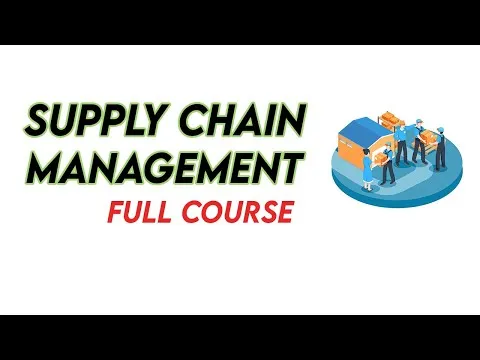
Forecasting Techniques for Slow and Rapidly Changing Demand 
This course provides an overview of forecasting techniques for slow and rapidly changing demand. It covers topics such as supply shortages, pandemics, military wars, trade wars, and other disruptive events, and how they can affect consumer behaviour and product availability. Companies are encouraged to use the latest forecasting techniques to ensure they are prepared for any changes in demand. ▼
ADVERTISEMENT
Course Feature
![]() Cost:
Cost:
Free
![]() Provider:
Provider:
Edx
![]() Certificate:
Certificate:
Paid Certification
![]() Language:
Language:
English
![]() Start Date:
Start Date:
Self paced
Course Overview
❗The content presented here is sourced directly from Edx platform. For comprehensive course details, including enrollment information, simply click on the 'Go to class' link on our website.
Updated in [March 06th, 2023]
[Course Overview] This course is part of the edX Professional Certificate program to become a Certified Forecaster and Demand Planner (CFDP). It will provide learners with the knowledge and skills to forecast customer demand of different offerings going through different stages in their product life cycles; using causal and judgemental techniques, market research, statistical methods, time series of past sales and most recent customer orders. Learners will also be able to separate relevant from non-relevant data, and mitigate the impact of low forecast accuracy in demand planning, inventory management and profitability.
[Why to Learn] In today's business environment, supply shortages, pandemics, military wars, trade wars, and other disruptive events have a significant impact in both consumer behaviour and product availability. Companies are becoming aware that historical sales data sets might no longer be relevant; and that the customary forecasting methods are not the best for their new current situation. This course will provide learners with the skills to choose the right forecasting method for each data pattern and understand how to improve forecast performance with Machine Learning and Lean Six Sigma principles. By the end of this course, learners will be able to become an ISCEA Certified Forecaster and Demand Planner (CFDP), and be globally preferred by recruiters for decision making positions.
[Development Paths] Learners will be able to develop their forecasting skills by learning how to forecast customer demand of different offerings going through different stages in their product life cycles; using causal and judgemental techniques, market research, statistical methods, time series of past sales and most recent customer orders. They will also be able to separate relevant from non-relevant data, and mitigate the impact of low forecast accuracy in demand planning, inventory management and profitability. Learners will also be able to improve their forecasting performance with Machine Learning and Lean Six Sigma principles.
[Related Learning Suggestions] Learners interested in this course may also be interested in related courses such as Supply Chain Management, Demand Forecasting, Slow Demand Forecasting, Rapidly Changing Demand Forecasting, Machine Learning, and Lean Six Sigma. These courses will provide learners with the knowledge and skills to understand the fundamentals of supply chain management, demand forecasting, and how to use machine learning and lean six sigma principles to improve forecasting performance.
[Applications]
Upon completion of this course, CFDP certified professionals will be able to apply their knowledge to choose the right forecasting method for each data pattern, understand how to improve forecast performance with Machine Learning and Lean Six Sigma principles, and forecast both slow and rapidly changing seasonal, intermittent and new product demand. Additionally, they will be able to separate relevant from non-relevant data, and mitigate the impact of low forecast accuracy in demand planning, inventory management and profitability.
[Career Paths]
The three job position paths recommended to learners of this course are:
1. Demand Planner: Demand Planners are responsible for forecasting customer demand of different offerings going through different stages in their product life cycles. They use causal and judgemental techniques, market research, statistical methods, time series of past sales and most recent customer orders to accurately forecast customer demand. Demand Planners are in high demand due to the increasing need for companies to be able to accurately forecast customer demand in the face of changing market conditions.
2. Inventory Manager: Inventory Managers are responsible for managing the inventory of a company. They use forecasting techniques to ensure that the company has the right amount of inventory to meet customer demand. They also use forecasting techniques to ensure that the company does not have too much inventory, which can lead to losses. Inventory Managers must be able to accurately forecast customer demand in order to ensure that the company has the right amount of inventory.
3. Supply Chain Analyst: Supply Chain Analysts are responsible for analyzing the supply chain of a company. They use forecasting techniques to identify potential problems in the supply chain and develop solutions to improve the efficiency of the supply chain. Supply Chain Analysts must be able to accurately forecast customer demand in order to ensure that the supply chain is running smoothly.
The developing trends for each of these job positions are:
1. Demand Planner: Demand Planners are increasingly using Machine Learning and Lean Six Sigma principles to improve their forecasting accuracy.
2. Inventory Manager: Inventory Managers are increasingly using predictive analytics to improve their forecasting accuracy.
3. Supply Chain Analyst: Supply Chain Analysts are increasingly using data mining and artificial intelligence to improve their forecasting accuracy.
[Education Paths]
Recommended Degree Paths:
1. Bachelor's Degree in Supply Chain Management: This degree program provides students with the knowledge and skills needed to manage the supply chain process from start to finish. Students learn about the principles of supply chain management, logistics, inventory management, and forecasting techniques. They also gain an understanding of the latest trends in the industry, such as the use of technology and analytics to improve efficiency and reduce costs.
2. Master's Degree in Business Analytics: This degree program focuses on the use of data and analytics to make better business decisions. Students learn about data mining, predictive analytics, and forecasting techniques. They also gain an understanding of the latest trends in the industry, such as the use of artificial intelligence and machine learning to improve forecasting accuracy.
3. Master's Degree in Operations Research: This degree program focuses on the use of mathematical models and algorithms to solve complex problems. Students learn about optimization techniques, simulation, and forecasting techniques. They also gain an understanding of the latest trends in the industry, such as the use of big data and analytics to improve forecasting accuracy.
4. Doctoral Degree in Supply Chain Management: This degree program focuses on the use of advanced research methods to analyze and improve supply chain processes. Students learn about supply chain optimization, forecasting techniques, and the use of technology and analytics to improve efficiency and reduce costs. They also gain an understanding of the latest trends in the industry, such as the use of artificial intelligence and machine learning to improve forecasting accuracy.
Course Provider

Provider Edx's Stats at AZClass
Discussion and Reviews
0.0 (Based on 0 reviews)
Explore Similar Online Courses

Networking in Google Cloud

Financial Markets

Python for Informatics: Exploring Information

Social Network Analysis

Introduction to Systematic Review and Meta-Analysis

The Analytics Edge

DCO042 - Python For Informatics

Causal Diagrams: Draw Your Assumptions Before Your Conclusions

Whole genome sequencing of bacterial genomes - tools and applications

MIT Free Supply Chain Management Courses

What Are Good Supply Chain Certifications?


Start your review of Forecasting Techniques for Slow and Rapidly Changing Demand